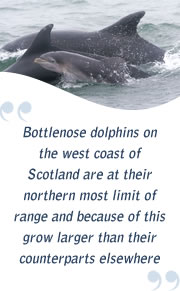Sightings Index
- Community Sightings Network
- Watching Cetaceans
- Report a Sighting Online
- Identification Tips
- Recent Sightings Table
- Monthly Sightings Reports
- November 2016
- October 2016
- September 2016
- August 2016
- July 2016
- June 2016
- May 2016
- April 2016
- Winter/Spring 2016
- October 2015
- September 2015
- August 2015
- July 2015
- June 2015
- May 2015
- April 2015
- March 2015
- Winter-Spring 2015
- November 2014
- October 2014
- September 2014
- August 2014
- July 2014
- June 2014
- Winter 2013/2014
- November 2013
- October 2013
- September 2013
- August 2013
- July 2013
- June 2013
- May 2013
- April 2013
- 2012 Sightings Summary
- October 2012
- September 2012
- August 2012
- July 2012
- June 2012
- May 2012
- April 2012
- March 2012
- Winter 2011/12
- 2011 Sightings and Strandings Summary
- November 2011
- October 2011
- September 2011
- August 2011
- July 2011
- June 2011
- May 2011
- April 2011
- Winter 2010/11
- September 2010
- August 2010
- July 2010
- June 2010
- May 2010
- April 2010
- March 2010
- Winter 2009/10
- September 2009
- August 2009
- July 2009
- June 2009
- May 2009
- April 2009
- March 2009
- February 2009
- January 2009
- December 2008
- November 2008
- October 2008
- September 2008
- August 2008
- July 2008
- June 2008
- May 2008
- April 2008
- March 2008
- Strandings


Monthly Sightings Reports
HWDT’s Community Sightings Network encourages residents, local wildlife operators and visitors to the area to report their sightings of whales, dolphins and porpoises to HWDT. This information is important because it contributes to our understanding of where and when particular species occur. Report your sighting HERE.
Each month HWDT publishes a summary report of the sightings recorded via our Community Sightings Network. In summer we receive the greatest number of sightings while winter is a quiet time. This is partly due to the number of species present but also reflects the sea state and number of people on the water watching for whales, dolphins and porpoises. In winter, fewer people are watching and the sea state more frequently makes sightings difficult, or even impossible. Also non-resident species have migrated for the winter. At this time of year HWDT receives more strandings reports than at other time as storms can wash animals ashore. These seasonal variations will be reflected in our reports.
Select the monthly report you wish to view from the panel on the left of this page.
May 2015
The spring return to coastal walking, recreational sailing and the beginning of the season for sea going tours traditionally lifts the number of cetacean sightings. That is very much the case this May, despite continuing poor weather including strong winds that have restricted sailings around the Hebrides on numerous occasions.
This month has been notable for an increase in minke whale sightings. They have appeared from the Isle of Arran in the south through Coll and Skye to Swordale on the Isle of Lewis. The weather may well have made more sightings difficult, but killer whales have again been reported - this time off Armadale on the Isle of Skye. The most well-known of the west coast orca group, nicknamed Joe Coe, has recently become even more distinctive as he has lost a significant area of his tail fluke, a misfortune that expert analysis has suggested is probably the legacy of a shark attack.
Harbour porpoise have again been noted across a wide range, although the main concentrations were in and around the Sound of Mull with a large group of thirty being seen near Lochaline. Porpoises are normally seen in small groups of typically two to five and such a large group is very unusual. It is not always obvious what makes them congregate in such large numbers but it may be when there is a concentration of food. Common dolphins have only been reported on five occasions, but these included a group of eighty being seen off the Isle of Eigg. Bottlenose dolphin reports have been widely dispersed. Groups tend to be highly mobile in response to food supplies and one sighting was actually filmed underwater from a tour boat and it showed the dolphins herding shoals of small mackerel to trap them against the hull of the boat. Hopefully we will receive more such reports as the mackerel reach the area in larger numbers this summer.
A map of this sightings from 1 to 31 May can be viewed here
.




